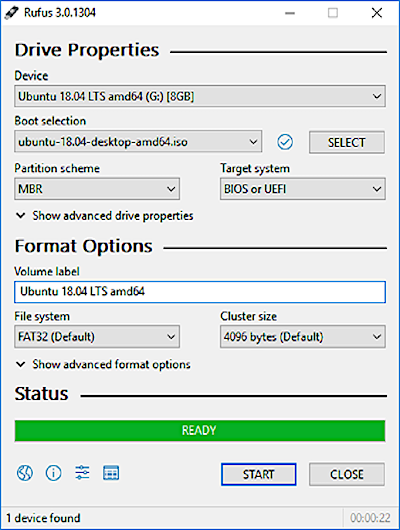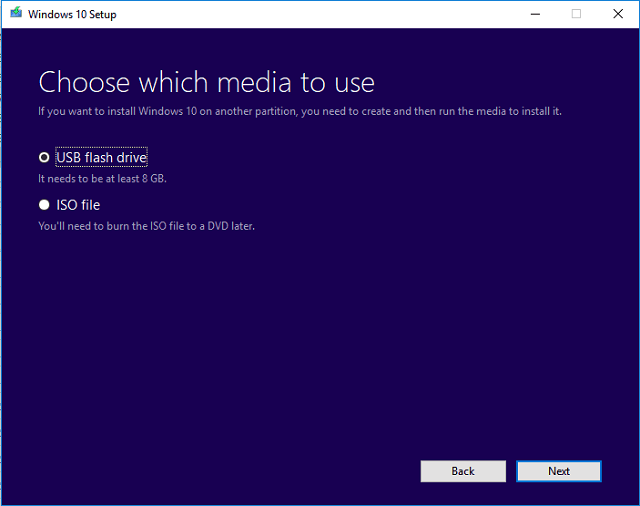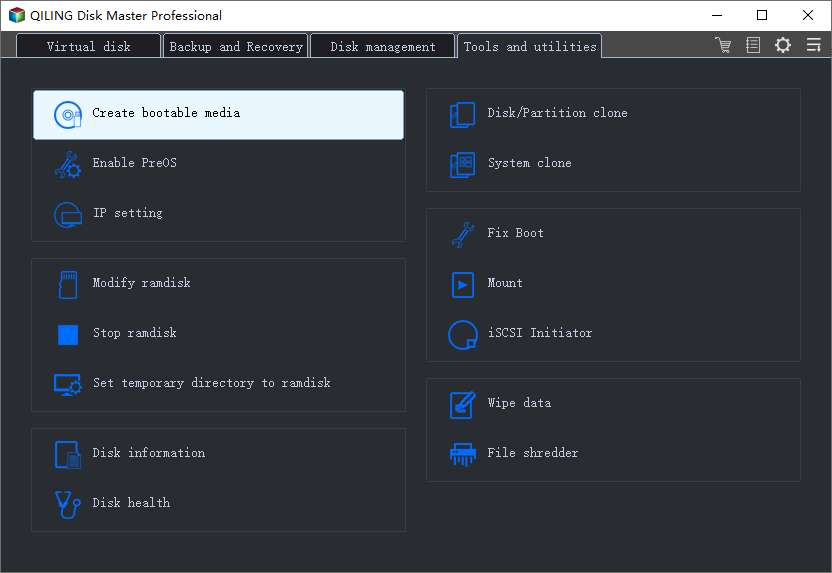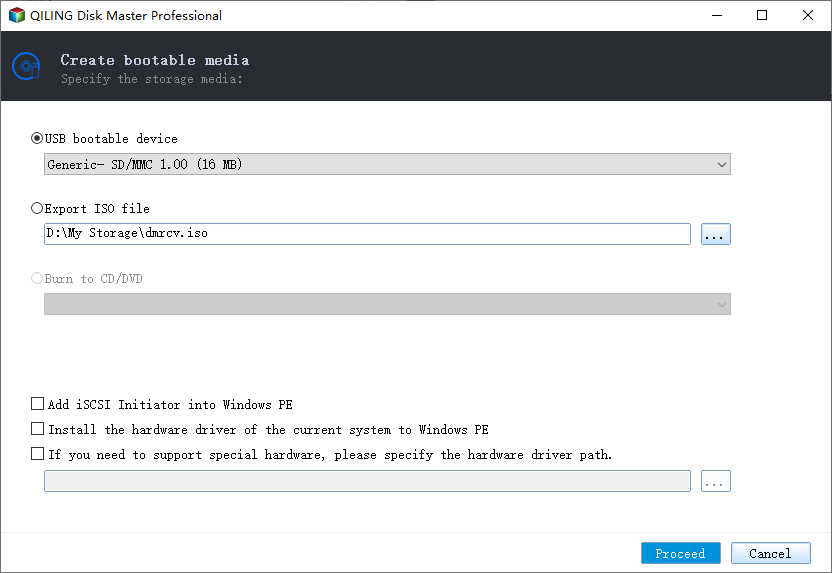How to Create Bootable Usb Windows 10
| Workable Solutions | Step-by-step Troubleshooting |
|---|---|
| Manual Way | Step 1: Format your USB drive. Step 2: Go to Microsoft's website and download the Media Creation Tool...Full steps |
| Use Qiling Partition Master | Step 1. To create a bootable disk of Qiling Partition Master, you should prepare a storage media...Full steps |
Introduction
Creating a bootable USB drive for windows is simple and can be done with a few clicks. This guide will walk you through creating bootable USB windows 10 using Rufus's free program. To make a bootable USB drive for Windows 10, you will need a USB drive with at least 8GB of storage space and a copy of the Windows 10 ISO. Users can download Windows 10 ISO from Microsoft's website.

Once you have downloaded the ISO, please open it and extract the contents to your USB drive. Make sure that the USB drive is formatted as NTFS. After extracting the contents, rename the USB drive to "Windows 10". After renaming the drive, please insert it into the USB port on your computer. When you turn on your PC and press F12, select "Boot from USB." The system will boot from the USB drive.
What is a bootable USB?
A bootable USB is a USB drive that can be used to start or "boot" a computer. A bootable USB can be used to install a new operating system (OS) on a computer or fix problems with the existing OS. An installation ISO file of the desired OS and a USB drive are needed to create a bootable USB. Creating a bootable USB requires a USB drive and the installation ISO file for your desired OS.
Why would you need a bootable USB for Windows 10?
Windows 10 is a great operating system, but what if something goes wrong and you need to reinstall it? That's where a bootable USB for Windows 10 comes in handy. A bootable USB is a USB drive that has been formatted to be used as a boot disk. You can use it to install Windows 10 on your computer, even if it doesn't have an operating system installed.
How to Create a Bootable USB for Windows 10?
Windows 10 is the latest version of the Windows operating system. It offers many new features, including the ability to create a bootable USB. This article will show you how to create a bootable USB for Windows 10. What you will need Before you begin, ensure that your computer has an empty USB drive. You also need to have a blank, formatted USB drive.
Two methods of creating bootable USB for Windows 10:
Creating a bootable USB for Windows 10 is essential when upgrading or installing the operating system. There are two common methods for using Microsoft's Media Creation Tool or DiskPart. The Media Creation Tool is the easier option, but it can only be used to create a bootable USB on a computer running the same Windows 10 you want to install. If you want to create a bootable USB on a different version of Windows 10, or if your computer doesn't have Windows 10 installed, you'll need to use DiskPart.
1. Manual Steps of Creating Bootable USB for Windows 10 Using the Media Creation Tool
In this article, we are going to show you the step-by-step manual instructions on how to create a bootable USB for Windows 10 using the Media Creation Tool:

Step 1: Format your USB drive.
Step 2: Go to Microsoft's website and download the Media Creation Tool. Once downloaded, open it up and click on "Create installation media for another PC".
Step 3: Create bootable media using the Media Creation Tool.
Step 4: Select which language, edition, and architecture you want Windows 10 to be installed in.
Step 5: Ensure that the "ISO file" option is selected and then click on "Next".
Step 6: The Media Creation Tool will start downloading the necessary files.
Step 7: Once it is done, choose where you want to save the ISO file and click on "Create".
We will show you how to create a bootable USB using the ISO file. First, insert a blank USB into your computer. Once you have done that, open up your Command Prompt. Press the "Windows + X" on the keyboard and select "Command Prompt (Admin)". In the Command Prompt, enter the disk part and then type list disk.
Once you have done that, you will see a list of your hard drives. Choose the disk with the ISO file on it and then select "select disk X". You will now be asked to type in the number of cylinders for your USB drive. Type in 15 and then press enter.
2. Use Third-party Bootable USB Creation Tool
A bootable USB is a must-have tool for any computer technician. It can be used to install an operating system, troubleshoot problems, or as a rescue disc. The most common way to create a bootable USB is to use the built-in tools of your operating system. But what if you need to create a bootable USB on a different computer? Or what if your computer doesn't have an operating system installed? You can use a third-party tool to create your USB in these cases.
What is Qiling Partition Master and its WinPE Creator
Since its establishment in 2004, Qiling has been a leader in providing innovative data security and storage management software. Qiling Partition Master is one of the company's most popular products. A disk partitioning tool allows users to manage their hard disk partitions and check hard disk health easily. In addition to its Windows-based version, the company also offers a WinPE Creator version that can be used to create a bootable USB or CD/DVD drive with the Partition Master software installed. It allows users to manage their partitions even if they cannot start their computer.
Step 1. To create a bootable disk of Qiling Partition Master, you should prepare a storage media, like a USB drive, flash drive or a CD/DVD disc. Then, correctly connect the drive to your computer.
Step 2. Launch Qiling Partition Master, find the "Create bootable media" feature on the top. Click on it.

Step 3. You can choose the USB or CD/DVD when the drive is available. However, if you do not have a storage device at hand, you can also save the ISO file to a local drive, and later burn it to a storage media. Once made the option, click the "Proceed" button to begin.

When the process finishes, you have successfully created an Qiling Partition Master WinPE bootable disk. Now, you can manage your hard disks and partitions through the bootable drive whenever the computer fails to boot normally.
If you have RAID drives, load the RAID driver first by clicking Add Driver from the menu bar, which can help you add the driver of your device under WinPE environment, as some specific device cannot be recognized under WinPE environment without drivers installed, such as RAID or some specific hard disk.
Final thoughts
Creating a bootable USB Windows 10 is an easy process that can be completed with a few simple steps. By following the above instructions, you can create a USB stick that can be used to install Windows 10 on any computer. This process is ideal for people who want to install Windows 10 on multiple computers or for people who want to try out the new operating system before committing to a complete installation.
Note: Before you begin, ensure you have enough space on your USB for 8GB and have backed up your data.
Related Articles
- How to Partition Hard Drive (including C drive) in Windows 11/10 Without Formatting
- How to Clone SD Card in Windows 11/10/8/7 (5 Minutes Tutorial)
- 2022 Tutorial: How to Resize C Drive in Windows 10/8/7
- How to I Permanently Shred Files? Your Complete Guide Is Here